The two-body problem – Perspectives of an early career researcher
Guest Post by Gaurav Moghe
The two-body problem has been a classical mechanics problem in physics since at least Newtonian times. However, the first suggestion of Google’s autocomplete feature is “two-body problem academia”, with at least the first 90+ results being very relevant to the topic. This example hints at how pervasive the two-body problem is in academia. For the uninitiated, the “two-body problem” (which also has its own Wikipedia page! [1]) refers to the situation where both spouses have difficulty obtaining satisfactory jobs at the same university or within a commuting distance from each other. The concept of “satisfactory jobs” is important, because while many spouses do get jobs, the “trailing partners are often forced to opt down into lower-paying, less challenging positions, or leave the workforce entirely” [2, 3]. An informal 2014 survey by the Scientific American magazine largely comprised of academic respondents revealed that 90% of them had faced or expected to face the problem someday [4].
The two-body problem is also not a recent or a field-specific occurrence, evidenced by a physics-specific survey conducted in 1998, which revealed that 60% of the respondents had taken a step back from their careers [2]. However, if university dual-career hiring percentages are an indicator, it has become more serious in the last three decades [5]. Studies also reveal that women face a greater brunt of the two-body problem than men – in one study, 56% of male faculty members were found to have full time working spouses vs. 89% of female faculty members [6], suggesting that a disproportionately high percentage of females had left the workforce. Resolving this problem would be an important step towards improving diversity in academia.
The primary goal of this post is not to suggest high-impact solutions to address the two-body problem – much effort and thought have been put into it already by experts (e.g. [5]). On the contrary, my intention is to illustrate, through personal experience, the importance of small gestures in getting early career couples over some major career bumps.
I write this article from personal experience since my wife Ashwini and I have been performing a career tango spanning four cities, five states, and two countries for almost fifteen years now! Coming to the US from India as international graduate students, we started in two different cities – East Lansing (Michigan State University) and Detroit (Wayne State University) – both in Michigan but ~90 miles (150 km) apart. The Genetics Program at MSU recognized our two-body problem and admitted my wife into the program the next year. Then, when I finished my PhD, Ashwini was in her last year of grad school and we were expecting our first child. I decided to stay back at MSU as a postdoc for a brief six months in Rob Last’s lab, who graciously allowed me to join for just six months – again, recognizing our two-body problem. Well…six months turned to four years, and since I liked my projects a lot, Ashwini decided to stay on for me for a few more years of postdoc also at MSU.
Her career trajectory took another turn when she got an excellent industry job at Madison, Wisconsin (~400 miles/650 km away) just two years into my postdoc. Over the next two years, I bought an airline’s miles card, took a troublesome number of “Planes, Trains, and Automobiles” and traveled to Wisconsin every two weeks over the weekends to meet my wife and daughter. Due to these travels, I am now in a clearly enviable position to rate every restaurant at the Chicago and Detroit airports. In my fourth year in Rob’s lab (and Ashwini’s second year at her employer), I got my current faculty position at Cornell University in Ithaca, New York. This time, my wife’s employer was accommodating of her family interests and allowed her to work remotely, a situation that rarely occurs in her specific area of work.
We are now in a happy position of having satisfying jobs that both of us love, where most importantly, none of us had to significantly alter our career trajectory. While both of us have high-pressure, stressful jobs, coming home to family makes all the difference in the world. When I look back at our tristate dance, it is impossible to overstate the importance of PhD and postdoctoral mentors and supervisors who supported us at all times and facilitated our current situation. My postdoctoral advisor, for example, allowed me to travel to Wisconsin to take care of my daughter whenever my wife had to go to conferences.
As we continue to discuss policy changes for reducing graduate student disillusionment in science-related careers and for improving female participation in STEM jobs, the impact of small gestures by mentors for helping their trainees should not be ignored. In our particular case, remote work and frequent travel – allowed by both my wife’s employer and my postdoctoral mentor – were absolute blessings. Mentors consciously helping out their trainees in their own family-career dance can potentially keep more couples in the scientific workforce and as an added bonus, help increase diversity. Trainees, too, should be encouraged to seek out help and advice from advisors in managing the two-body problem. Late 20s/early 30s is when most students graduate, move to postdoctoral positions, build up publications/networks, get married, have kids and go on the job market. There is an additional concern of visa uncertainty in today’s times for international graduate students, who constitute a fifth of all biological sciences graduate students in the US [7]. There is a lot going on in the lives of the early career researchers, and while the age group has not changed for the last several decades, the nature of the job market has. Having supportive mentors at these critical stages in life – who not only care about the research output but also the mental health of their trainees – can do a lot of good in retaining these excellent individuals in science, helping the cause of diversity.
Common advice given to interviewees for faculty jobs is to not talk about their significant other at all because it might bias the search committee against them. It has also been suggested that female candidates are asked questions about their spouses more often than male candidates [8, 9], despite being illegal for the search committee (at least in the US) to ask questions about marital status or spousal employment status [10]. Having to hide a spouse with career ambitions of their own should not be a burden candidates need to carry to interviews. On the contrary, one of the most exhaustive formal studies on the topic of the two-body problem and university hiring [5] recommends, among other things, “making the partner issue easier to raise”, “developing a (formalized) dual-career academic couple hiring protocol” and “budgeting funds for dual hiring”, noting that these initiatives can go a long way in improving both gender and ethnic diversity on university campuses. A combination of cognizant mentors, conscious hiring committees, and empathetic and visionary university administrators can help move the needle on several fronts at the same time.
References:
1. (2019) Two-body problem (career). Wikipedia, https://en.wikipedia.org/w/ind…
2. McNeil L, Sher M (1998) Dual science career couples: Survey results. http://www.physics.wm.edu/~she…
3. Clarendon D (2018) Trailing Partners in Academia Face Unique Career Challenges. https://life.saywerk.com/posts…
4. Harrington R (2015) Confronting the 2-Body Career Problem [Poll Results]. Scientific American, https://www.scientificamerican…
5. Schiebinger L, Henderson AD, Gilmartin S (2008) Dual-Career Academic Couples: What Universities Need to Know. http://aafawce.eng.usf.edu/adv…
6. Jacobs JA, Winslow SE (2004) Overworked Faculty: Job Stresses and Family Demands. The ANNALS of the American Academy of Political and Social Science, 596(1):104–129. https://doi.org/10.1177/000271…
7. Okahana H, Zhou E (2018) Graduate Enrollment and Degrees: 2007 to 2017. https://cgsnet.org/ckfinder/us…
8. Baker K (2016) On ‘Poor Husbands’ and Two-Body Problems. ChronicleVitae, https://chroniclevitae.com/new…
9. Female Science Professor (2011) The A to Z of Dual-Career Couples. The Chronicle of Higher Education, https://www.chronicle.com/arti…
10. Pre-Employment Inquiries and Marital Status or Number of Children. https://www.eeoc.gov/laws/prac…
Click here to view additional articles in the “Human Networks, Thinking Broadly and Solving Problems” Collection
 Author: Gaurav Moghe,Assistant Professor in Plant Metabolic Evolution, Plant Biology Section, Cornell University
Author: Gaurav Moghe,Assistant Professor in Plant Metabolic Evolution, Plant Biology Section, Cornell University


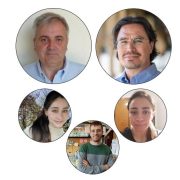
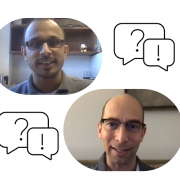
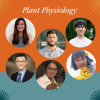
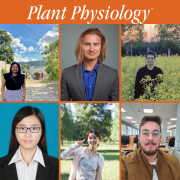
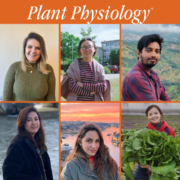





Leave a Reply
Want to join the discussion?Feel free to contribute!